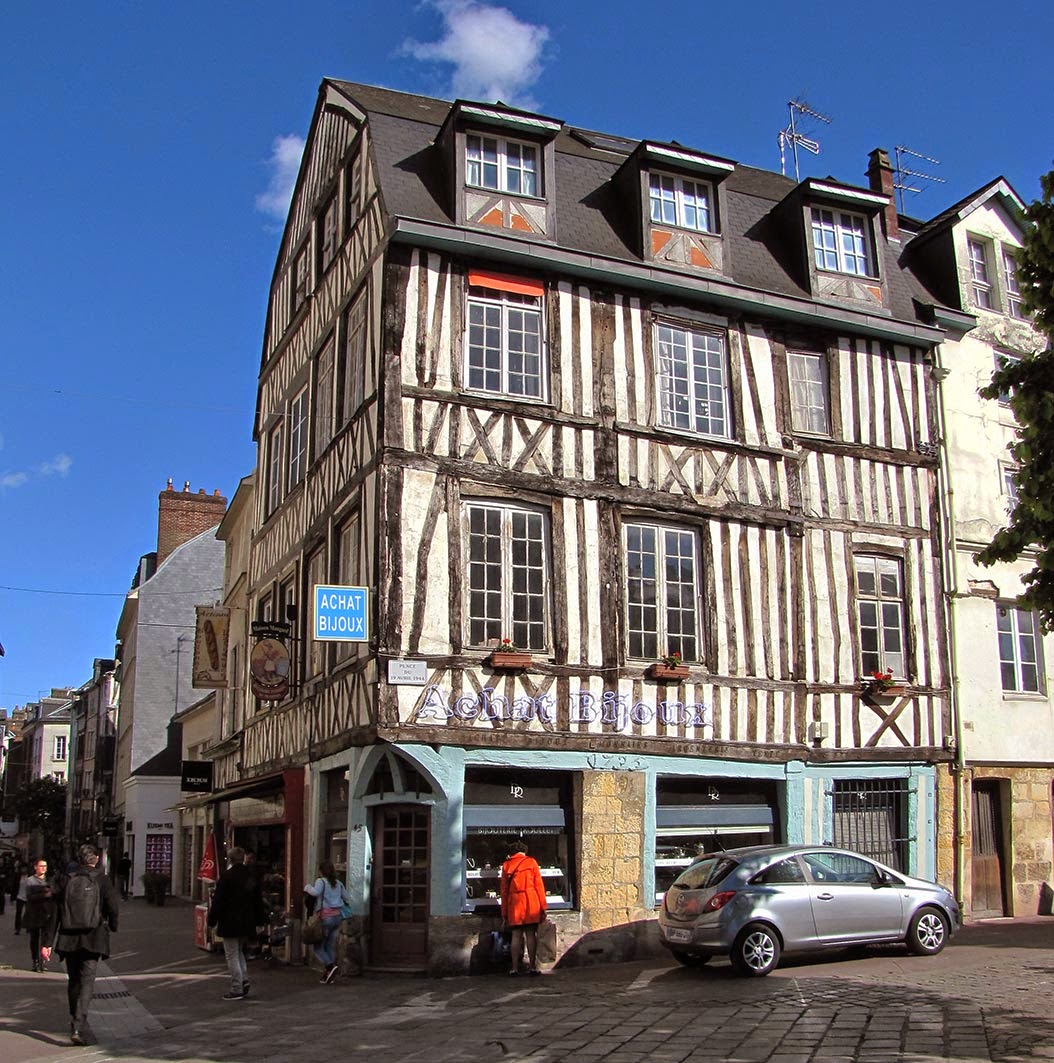Rouen
Yes, it is still Wednesday, May 14th, and we are in Rouen where the Siene and Eure rivers meet.
The Romans built an extensive wall around the city and by 313 A.D. it was already a religious center for the region of France that is now Normandy.
 |
The first church on this site was built in 393 A.D. and a Romanesque church in 1000 A.D.
Not to be out done by towns such as Amiens and Beauvais, from 1140 to 1500
the current church was built. That is a mighty long building program. |
 |
| It is hard to imagine building programs that last for hundreds of years. The leadership that initiated these cathedrals never lived long enough to see their completion. And rarely did any of them get built without having at least one of the towers or part of the structure collapse during or shortly after completion. All of the cathedrals we visited show the inevitable toll time takes on human endeavors. And man's efforts to repair. |
 |
Not withstanding the cost in human lives and resources to create this cathedral it is inspiring!
Man striving to connect with God. |
 |
After the dreary dark ages Europe was emerging trying
to find something to believe in, something greater than themselves. |
 |
| Not sure where it leads to, but a very elegant stair way. |
 |
Rouen was very prosperous during the middle ages and well
into the renaissance as shown by the distinctive half-timbered
buildings typical of this part of France. |
 |
It may look like it is falling over but it has stood this way for several
hundred years so chances are it will last a few more years. |
 |
| In 1527 the town's aldermen decided the town should have a public clock. You know, one of those new fangled modern things. To make it so everyone would be able to see it, they created an archway over their major street for the clock. This was the major shopping street in 1527, two wagons could pass each other! It stands proudly in that exact spot today in spite of wars, political upheavals and the ravages of time. |









No comments:
Post a Comment